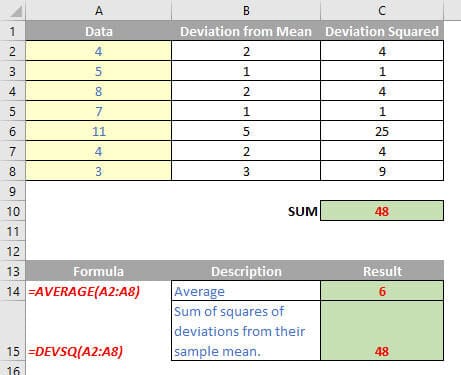keep in mind javascript is required for full website functionality.

Welcome back to our regular blog of Excel functions from A to Z. Today we look at the DEVSQ function.
The DEVSQ function
this function returns the sum of the squares of the deviations of the data points of their sample mean. This is a key component of statistical calculations such as the standard deviation..
The DEVSQ The function uses the following syntax to operate:
DEVSQ (number 1, [number2], …)
The DEVSQ The function has the following arguments:
- number 1, number2, …: number 1 is mandatory, the following numbers are optional. You can have between one and 255 arguments for which you want to calculate the sum of the squared deviations. you can also use a single array or a reference to an array instead of comma-separated arguments.
It should also be noted that:
- Arguments can be numbers or names, arrays or references containing numbers.
- logical values and text representations of the numbers you type directly in the argument list are counted.
- if an array or reference argument contains text, logical values or empty cells, those values are ignored; but nevertheless, cells with zero value are included
- Arguments that are error values or text that cannot be translated into numbers cause errors.
- the equation for the sum of the squared deviations is:

Please, see my example below:

Soon we will continue with our functions from A to Z of Excel. Keep checking: there is a new blog post every business day.
You can find a full page of feature articles here.
Sign up to receive our newsletter






